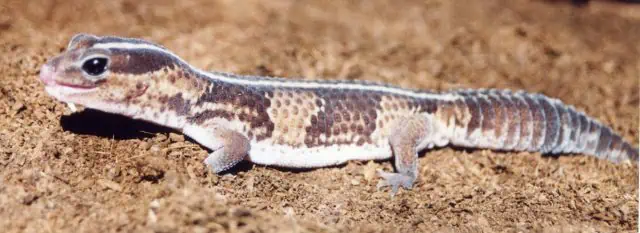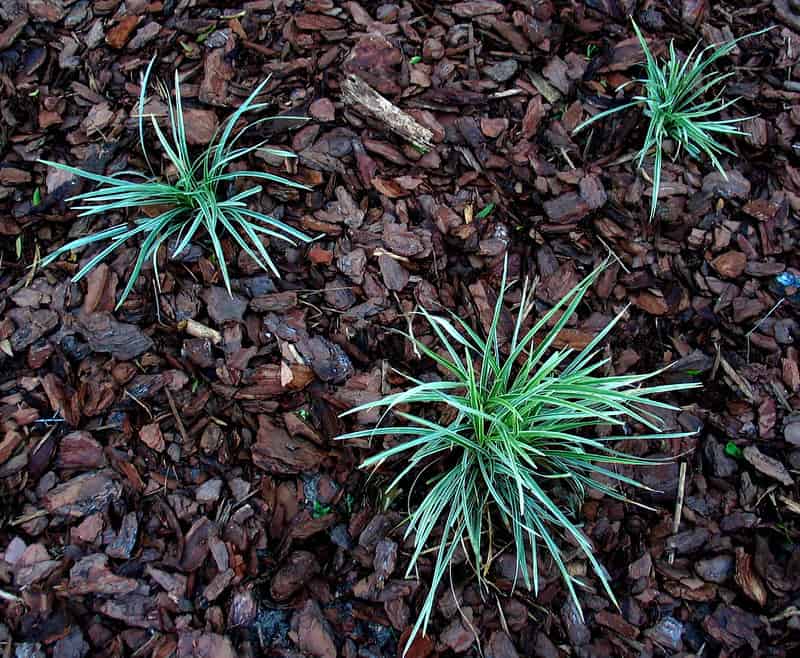African Fat-Tailed Geckos don’t usually grow larger than 8 inches, which is why many keepers use the same cage for the same gecko from a young age until adulthood. They can typically do well in 10-gallon tanks, but the ideal size is at least 15-gallons. And if you plan on getting a pair then you should use a 25-gallon vivarium.
The way you decorate the enclosure will make a huge difference in how the gecko will adapt to its new home. And one of the most important parts of the vivarium is the substrate. It can help the gecko feel at home and greatly improve the aesthetic of the habitat.
In this article, we’ll talk about what types of substrates you can choose from and which one is better for your needs.
Types of substrates for African Fat Tailed Gecko Tanks

Geckos are quite popular and today you can find a very wide range of substrates available for any type of lizard. This includes both natural and artificial products that are available online and in exotic pet shops. The type you choose greatly depends on your budget and cleaning time.
While artificial substrates are easier to clean, they don’t offer the enclosure a natural look at all. This is why the best option is to invest in a natural, bio-active substrate. It can greatly improve the way the whole enclosure looks while also making the gecko feel at home.
You also have the option to make your own substrate from scratch or buy it already bagged and ready to be set inside the cage.
Orchid bark
One of the most popular substrates is Orchid bark. It has decent water absorption properties and it can give a very natural look to the vivarium. And since African Fat-Tailed Geckos need higher levels of humidity, this is a great choice. They’re quite affordable and you won’t struggle too much with them, either when you clean and when you replace them.
A big problem among smaller geckos is the risk of accidental ingestion. But the risk is very low with this substrate, especially if you add moss as the last layer on top. You should expect to have to change it every month or so.
Cypress Mulch
Cypress mulch is another popular substrate that is just as good as retaining water. More than that, it’s highly biodegradable and you can even use it in the garden after using it as a reptile substrate. If you own a gecko that needs the humidity levels to remain stable, cypress mulch is a great option.
This substrate can come chopped very well in sharper pieces. It’s important to not let any bad substrate into the cage as the gecko can hurt its tiny little feed. But it has a tendency to get way too wet, which serves as another type of health issue in the long run.
Coconut Bark Chips
Coconut bark chip substrate is one of the newest types of substrates and it does its job extremely well. It’s made of processed hairs and old coconut husk. Their absorption ability is pretty decent as well and so far this is one of the best choices for African Fat-Tailed Gecko vivariums.
Newspaper substrate
Old newspapers tend to be free or at least extremely affordable. This is why it’s a very popular option among keepers that are on a budget or that are out of their usual substrate, and need a quick replacement. It’s recommended to place them whole at the bottom of the enclosure and change it daily. It absorbs the waste very well and is easy to replace.
However, there are some newspapers that are printed with an ink that can be toxic to reptiles. Make sure the ones you get are reptile-safe and won’t cause any health issues to your little gecko over time.
Another great and cheap option is paper towels. They need to not have any ink or ever been bleached. They’re very soft and some geckos really love it. In fact, it’s the ideal choice for juveniles as they tend to have more ingestion accidents.
Paper towels are also excellent for when your gecko is shedding its skin. They’re very soft and incredibly easy to clean.
Bioactive substrate for reptile tanks – Why and How?
Using artificial substrates (like carpets, paper towels, etc) or shavings and moss that need to be changed almost every week can get tiring and expensive after a while. This is why more and more keepers are learning how to create a bio-active substrate. They’re made from natural materials and typically have some type of small insects that help with the discomposure of the waste.
Bio-active substrates typically come in kits that include everything you need to set up the vivarium appropriately. You will also get an easy-to-follow and thorough guiding manual. And once you get better, you will be able to choose your own materials separately and make the ideal substrate exactly how you want it.
What are its advantages?
The advantages of using bio-active substrates over other types are mainly the ease of cleaning and natural look. You will only have to spot-clean each day then be on your way. The bio-active substrate will take care of everything else for about 6 months. It will also make the gecko feel like it’s back into the wilderness.
More than this, having real plants placed in the substrate and real moss can make a very big difference in how the habitat looks. It can enhance the aesthetic of your home without spending too much money.
How to make bioactive substrate
There are various tutorials on how to make a bio-active substrate online and they’re typically separated into two categories, layered substrate, and mixed substrate. You should do yours however you think it fits you and your gecko best.
Layered substrates include a good layer of organic soil, coconut fiber chips, or something similar, and the last layer is sphagnum moss. This ensures that the gecko won’t hurt its feet while walking around the enclosure.
If you want to mix everything up, you need to use around 50% organic soil, around 10% moss, 30% coconut husk, 10% sand, 5% orchid bark, and 5% cypress mulch.





